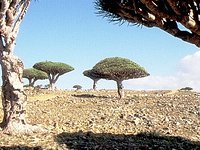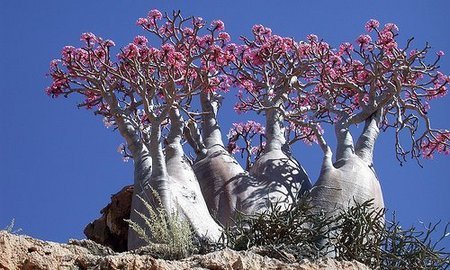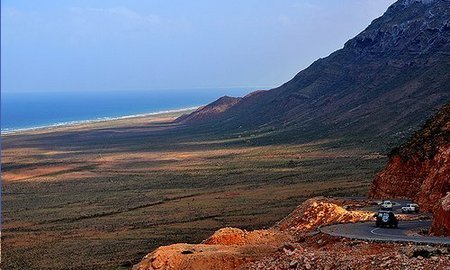 the Travel Enthusiast
the Travel Enthusiast
- 07 May
Tudi in Amazing Places | 1 COMMENTAmazing Earth: Socotra Island
 As we presented you some of the wonders of Galapagos at the beginning of this week, today we will focus our attention on the Island of Scotora in the Indian Ocean. Our choice is by no means accidental: also known as the ‘Second Galapagos’, Socotra represents an out of this world territory.
As we presented you some of the wonders of Galapagos at the beginning of this week, today we will focus our attention on the Island of Scotora in the Indian Ocean. Our choice is by no means accidental: also known as the ‘Second Galapagos’, Socotra represents an out of this world territory.Situated midway between the African coast and the Arabian Peninsula, the island of Socotra is populated by the most amazing species, many of them endemic and forming unique ecosystems. Although the island is not so far form the African coast, the sea has represented an often unsurmountable barrier, thus leading to the apparition and evolution of unique species.
The exoticism of Socotra’s nature represents its main characteristic as well as its biggest touristic attraction. Almost a third of Socotra’s plant species can only be admired and studied here. Among these, the Dragon Blood Tree has imposed as the island’s unofficial symbol. Although the Dragon Blood Tree is not endemic to Socotra (one can find its relatives all over the African continent), its strange looks makes it easily noticeable (you can see some Dragon Blood Trees in the picture below).
The tree, who got its name from its strongly pigmented resin, known from antique times as the ‘Dragon’s Blood’, blooms in February, offering a unique view. Another natural attraction of the island is represented by the numerous species of butterflies (over 190) and insects, many of which are also endemic. But many of Socotra’s beauties are still hidden in its calm waters and deep caves: hundreds of species of exotic fish, colorful corals and enormous stalactites and stalagmites are the dominant ingredients of these terrific subterranean/underwater worlds.
 Politically, the Socotra archipelago is currently a part of The Republic of Yemen. The population of the entire archipelago is no bigger than the one of a mid-sized European town (the latest census indicates that there are around 70000 living on the island).
Politically, the Socotra archipelago is currently a part of The Republic of Yemen. The population of the entire archipelago is no bigger than the one of a mid-sized European town (the latest census indicates that there are around 70000 living on the island).Despite Socotra being added just recently on the touristic map, ancient manuscripts are indicating that Socotra was known form the times of Alexander the Great (and even earlier). Judging by Socotra’s geographical position, it is safe to assume that the island’s culture has undergone both African and Arabic influences. Although many of the people have either Somali, Arab or South Asian origins, Socotra natives speak a distinctive language, called ‘Soquotri’.
- Flights
- Hotels
- Packages
- Cars
- Cruises
travel search by Travelgrove (get this widget)
With its strange species and extravagant landscapes, Socotra represents a true challenge for nature photographers and adventure travelers alike. But its natural richness is by no means doubled by wealth – in the past, many of the island’s inhabitants have been forced to immigrate due to poor resources. As the island slowly opens up of for tourists, its economy is reaching a critical stage: will fast food franchises and luxurious hotels redesign the face of Socotra? Or will it always remain that strange natural paradise, where one can go back to the immemorial times when the world was nothing but a huge peace of land surrounded by a planetary ocean?You might also like



what a fantastic place. How much are the airfares to this place… must be a long and expensive trip for me since I am in Europe, so Socotra is a bit out of the way 😉